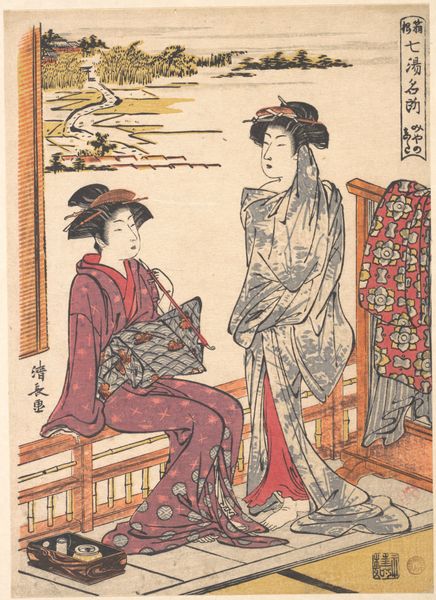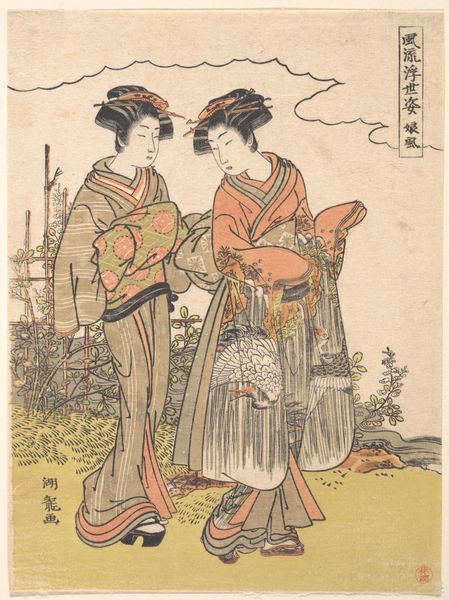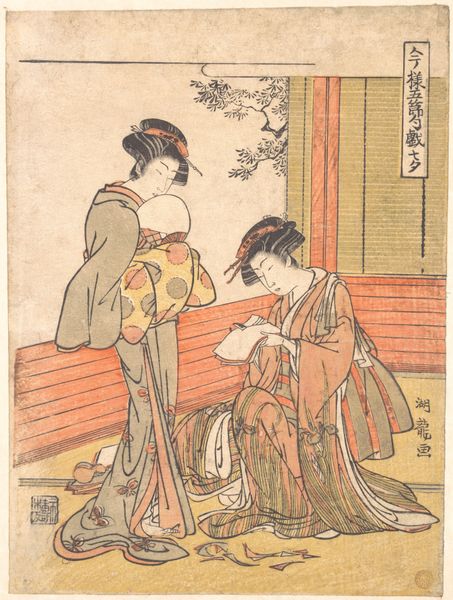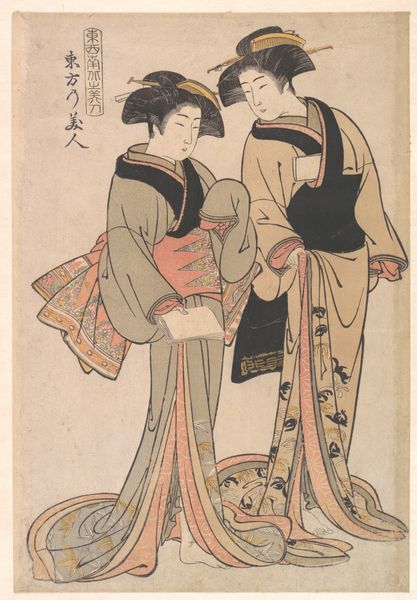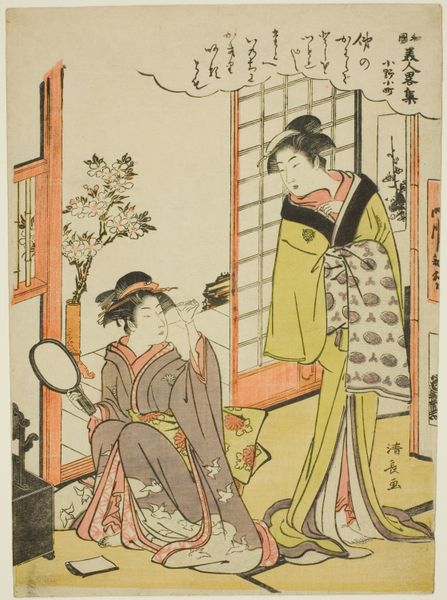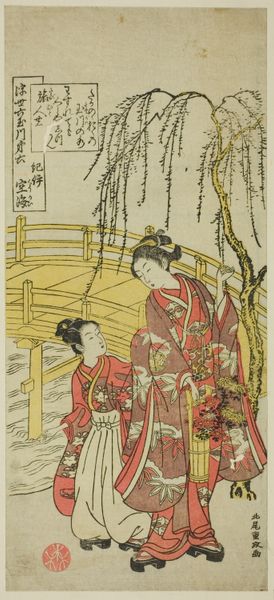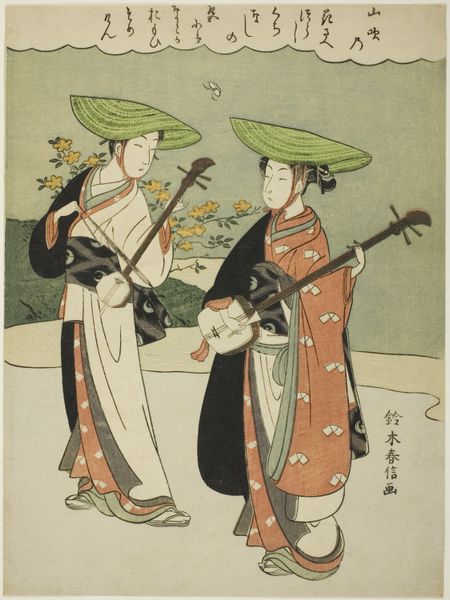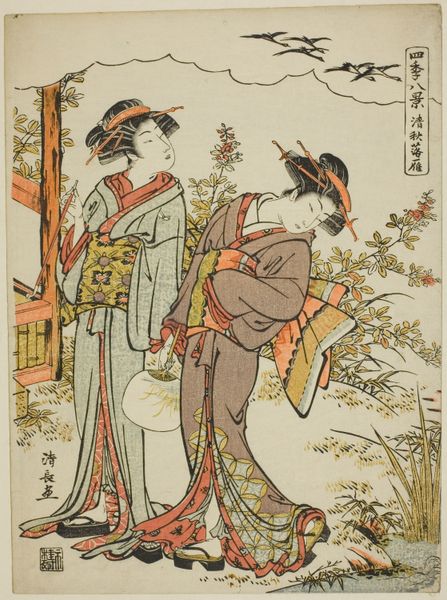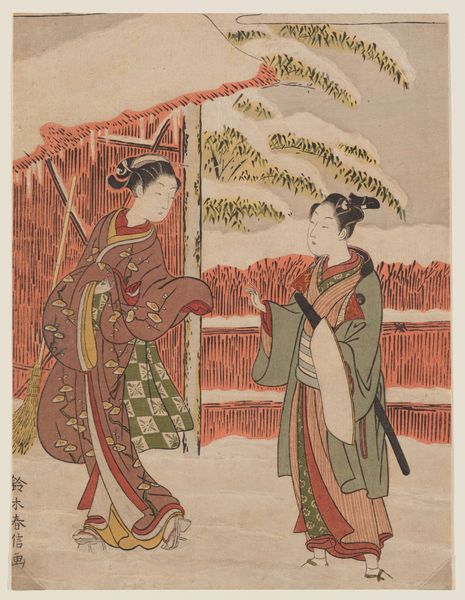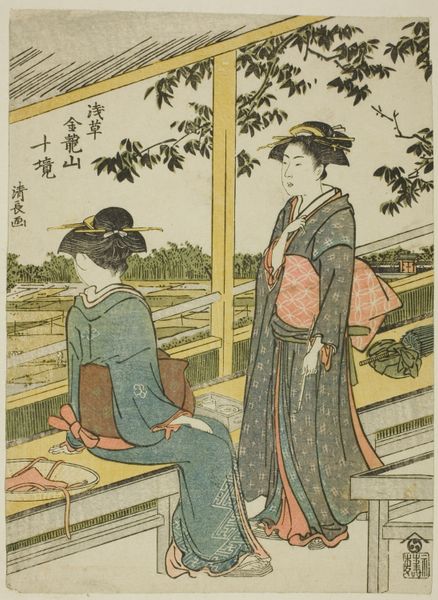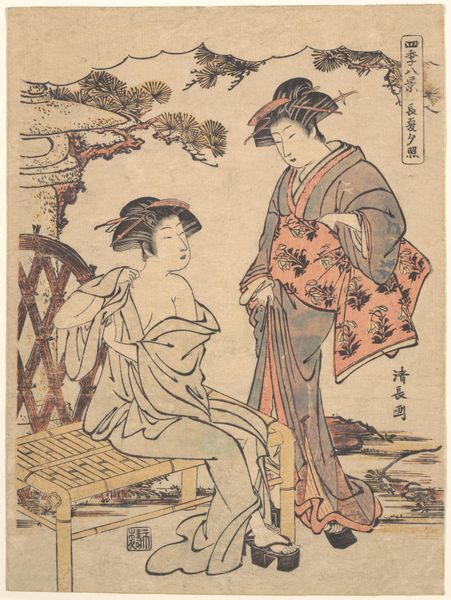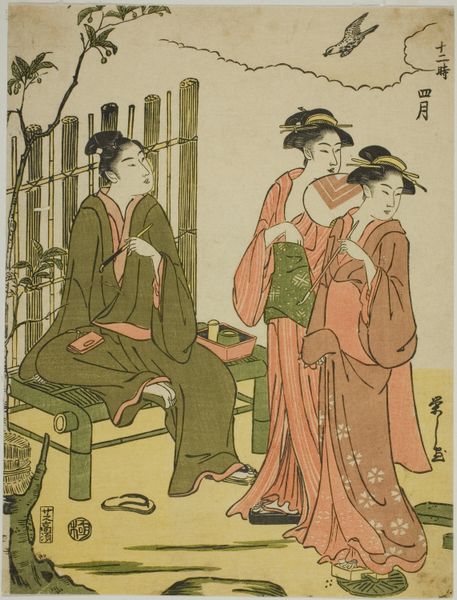
The Merchant (Sho) from the series Beauties Illustrating the Four Social Classes (Adesugata shi no ko sho) c. 1779
0:00
0:00
#
portrait
# print
#
asian-art
#
ukiyo-e
#
genre-painting
Dimensions: 20.4 × 15.5 cm
Copyright: Public Domain
Editor: So, this is "The Merchant (Sho) from the series Beauties Illustrating the Four Social Classes" by Torii Kiyonaga, made around 1779. It's a woodblock print. It's so serene, yet there's something in the women's focused expressions that intrigues me. What symbols or hidden meanings do you think Kiyonaga embedded in this work? Curator: That's an excellent observation! Consider the 'ukiyo-e' genre itself—the 'floating world.' It was obsessed with capturing fleeting beauty and the everyday. Now, look at the women. One is holding and reading from a letter while the other is touching her lips; her gesture is very sensual, what feelings could this trigger among male clients? These prints weren't just decorative; they reflected and shaped social desires, weren't they? What's your understanding of the significance of merchants in the social hierarchy during that era? Editor: Well, merchants were considered lower class but, weren't they also gaining economic power? Could these women, elegantly dressed and literate, represent that shift, a kind of blurring of social boundaries? Curator: Precisely! Kiyonaga, masterfully captures that tension. The lantern could symbolize enlightenment, and their attire hints at a refined lifestyle, acquired through commerce. Do you notice how their robes, the very fabric itself, become a statement? Each design motif, meticulously chosen, serves as a cultural signifier! Editor: So, the image isn't just a pretty picture, but a layered commentary on social mobility and the changing roles within Japanese society! It's interesting how this image speaks to the way beauty itself can be a form of communication, and that's what makes the artist masterful! Curator: Indeed! By examining the symbols within the image, the expressions, the setting, we begin to glimpse the complex and ever-evolving tapestry of 18th-century Japan.
Comments
No comments
Be the first to comment and join the conversation on the ultimate creative platform.
